Occupation Museum – Aarhus Denmark
By Robert Kelly
I had been to the in Aarhus, Denmark on a previous visit, but when I found out that they had spent about $1.5 million dollars on a refurbishment, I figured it was time to check it out again. The most striking thing about the museum is that it is housed in the former Gestapo Headquarters. The Germans invaded Denmark on 9 April, 1940 and by the end of the day, Denmark had capitulated. You first had to reserve a spot in the museum (its very small) and then pay just under $12 USD on entry.
The new version of the museum has gone interactive in a big way. When you get there they give you an identification card (“papers please”) that is coded to your preferred language. You can choose from Danish, English or German. There are various interactive terminals throughout the museum and you scan them with your card and you are then able to listen to some narration using a headphone.
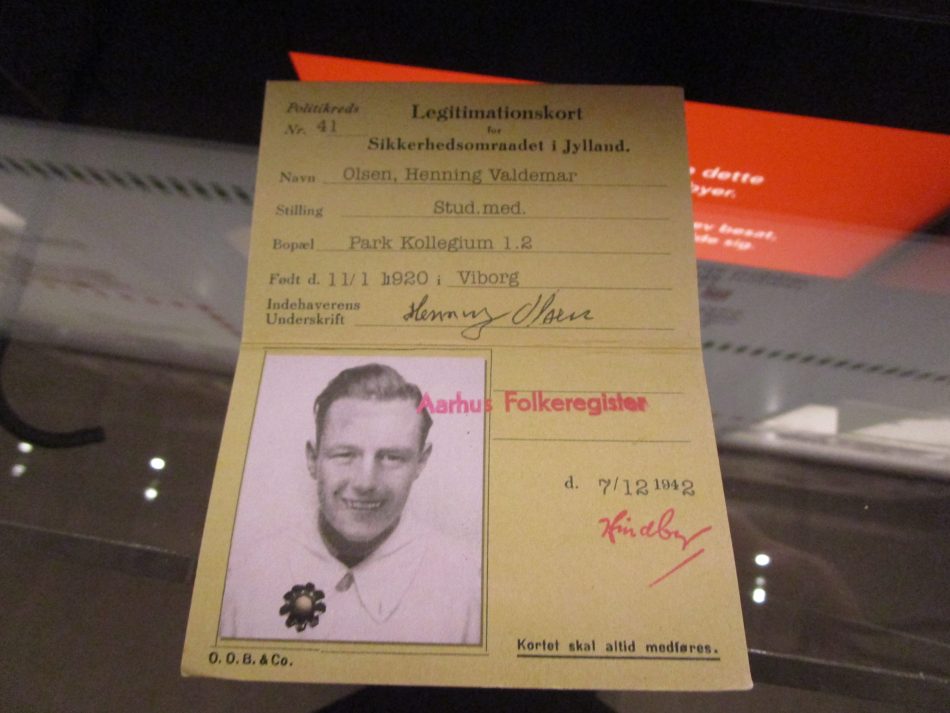
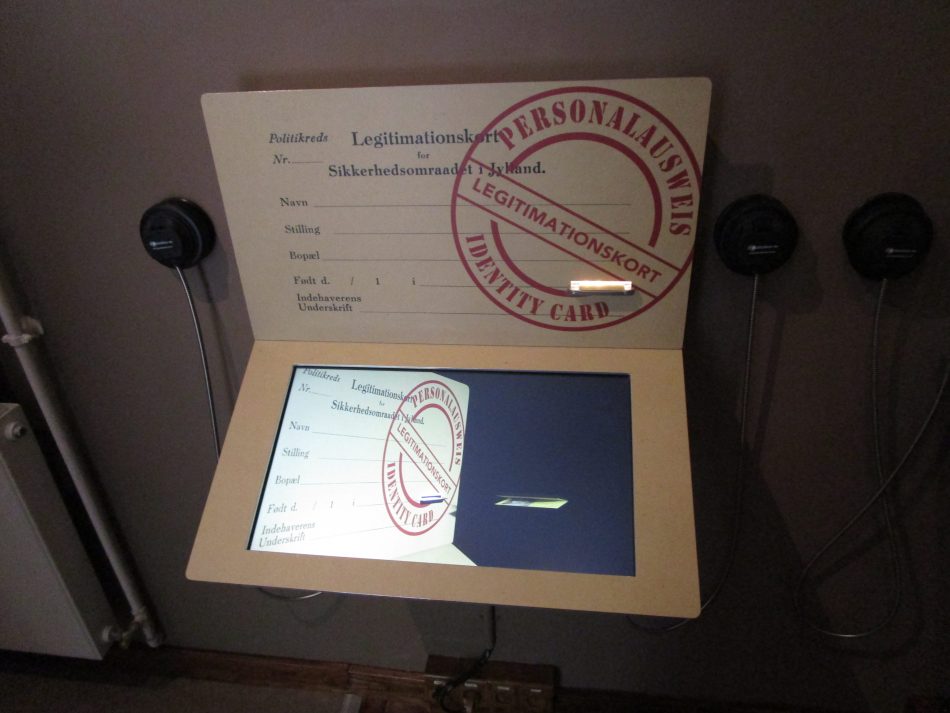
The first room is the office of the Gestapo station’s second in command. He appears on film and speaks to you in German-accented Danish (with English subtitles) and politely asks for your cooperation, all he while you can hear another suspect being tortured in the next office. I assure you that it’s a little unnerving when you sit in front of him.
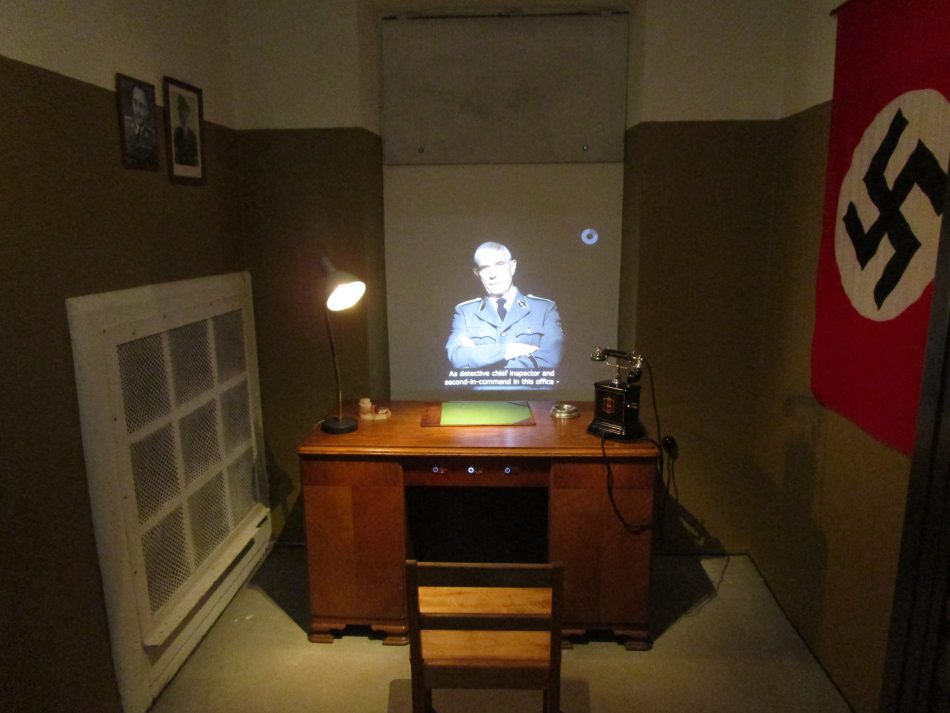
Here is the link to the full video.
The pre-requisite photos of some nasty guys in the second-in-command’s office.
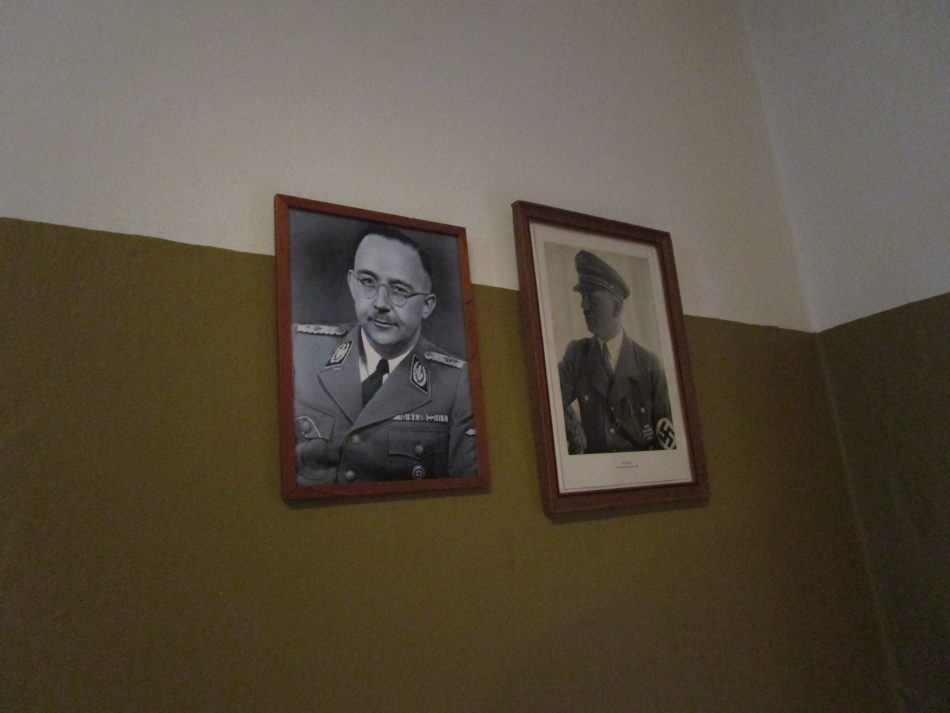
A look at the cells.
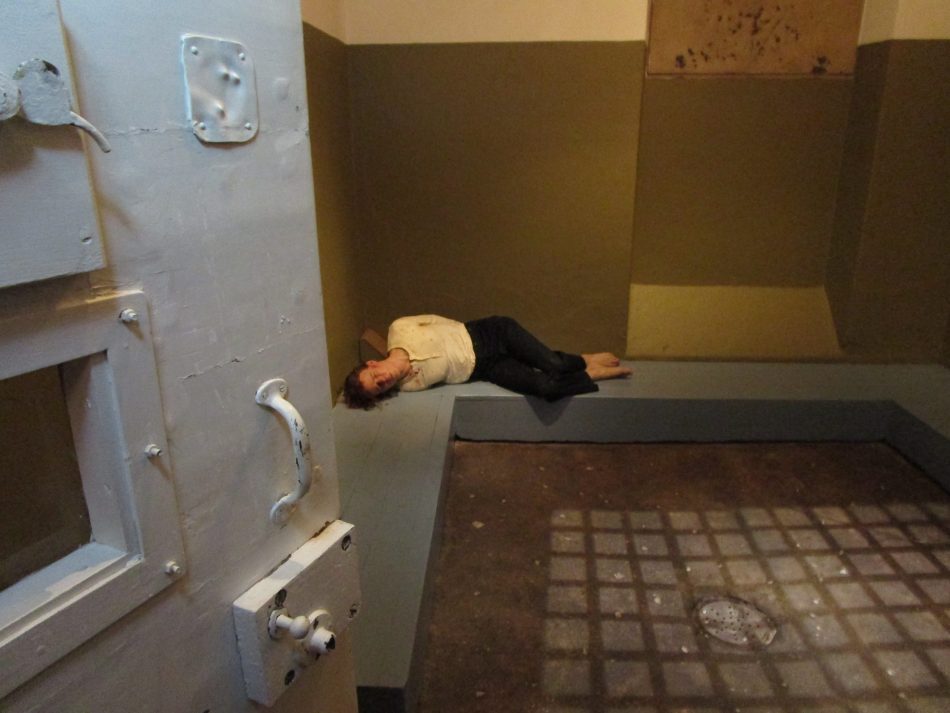
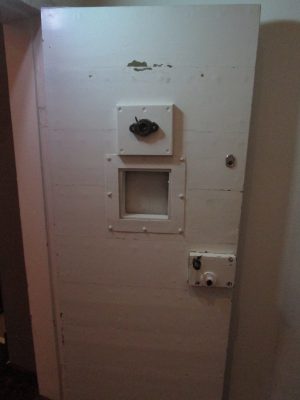
The armbands that were worn by the resistance fighters.
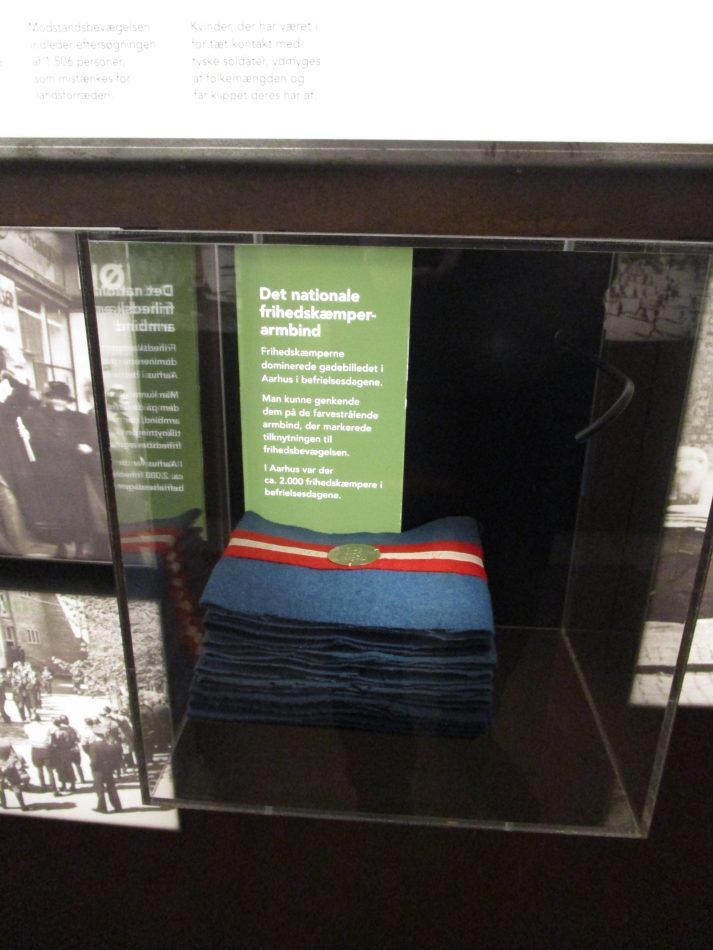
The next stage of the museum discusses home life under the occupation. Not that exciting for us wargamers, but they added this area to appeal to a wider audience. First they discuss rationing and the lack of basic items and food. One interesting fact is that the Danes hid their coffee supplies from the Germans and only recovered them at the end of the war and celebrated with real coffee instead of the “ersatz” variety they drank during the occupation.
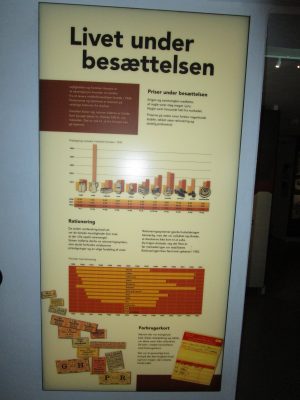
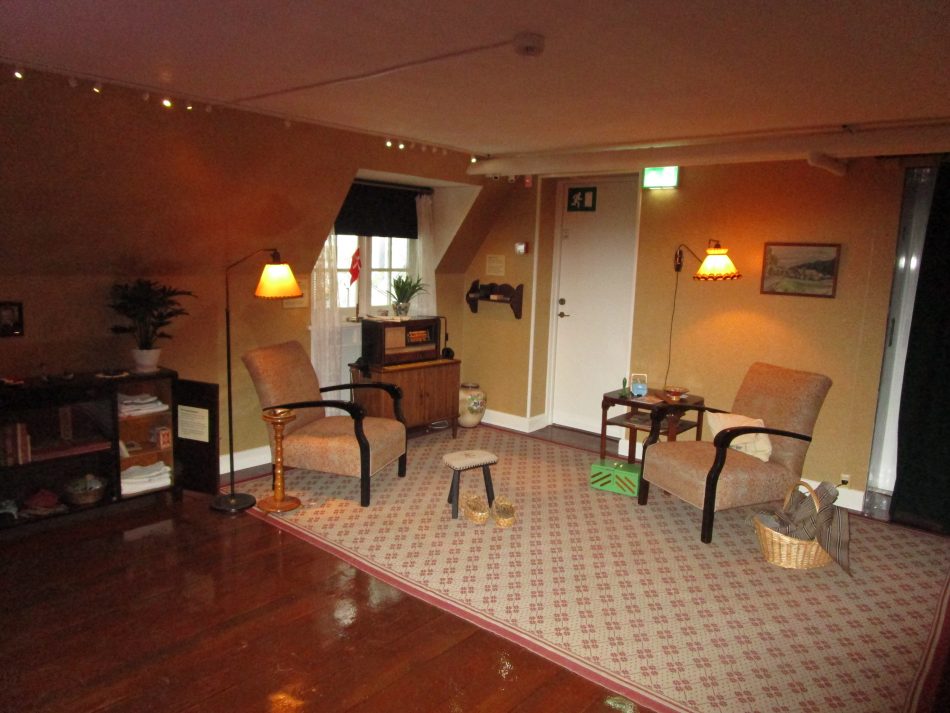
Next up they show us the German occupation forces. Tyskerne is Danish for Germans.
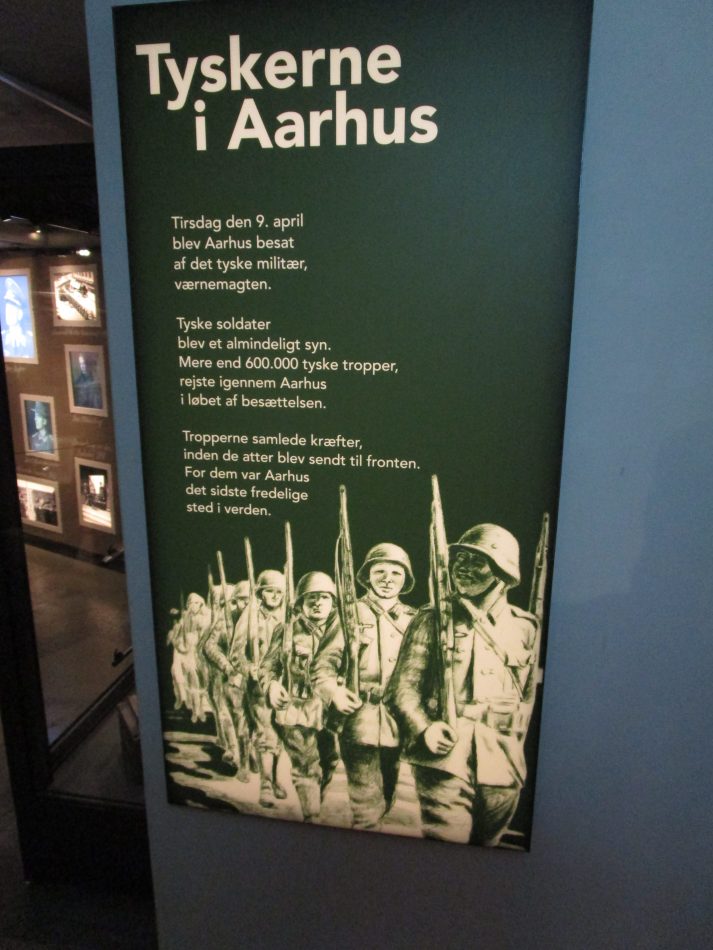

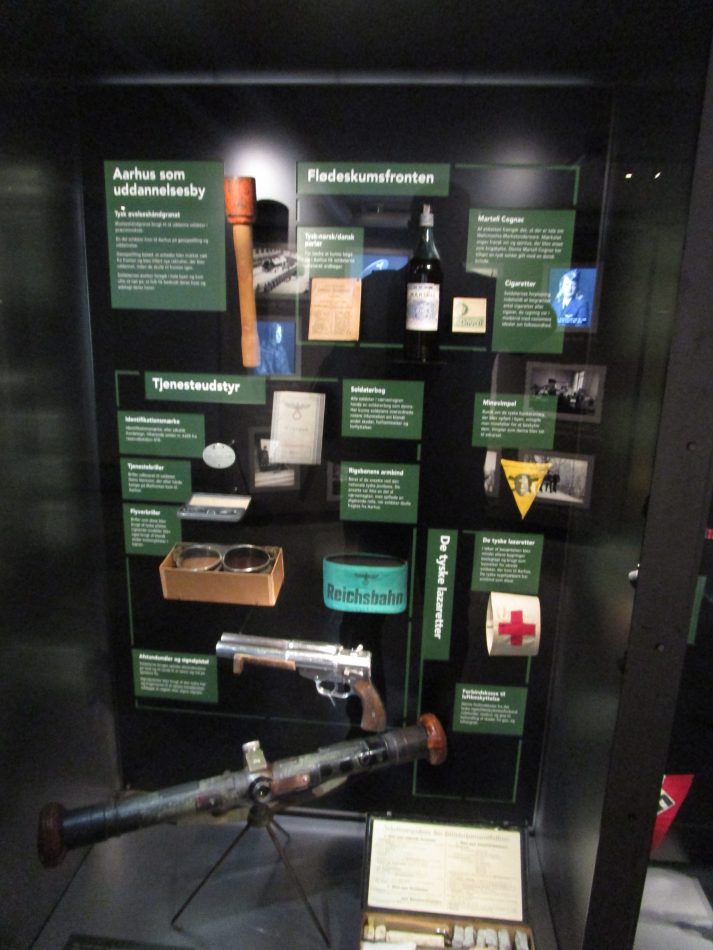
Note the Russian Front style winter boots in this photo.
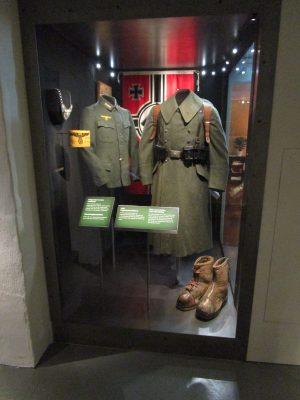
Obligatory weapons displays. Actually, the museum used to have a lot more weapons on display, including a lot of allied weapons used by the Resistance. In talking to one of the volunteers he said that they had great difficulty getting their weapons certified by the police for display. They couldn’t simply plug the barrels. Certification was an expensive process, so they limited the number of weapons on display. Note that the Luger is the long-barreled artillery version. They usually came with an extended stock as well.
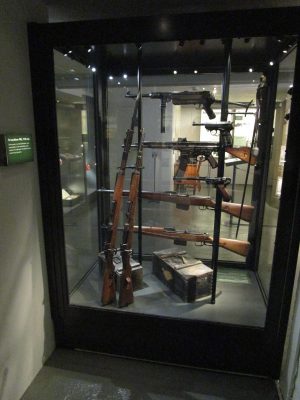
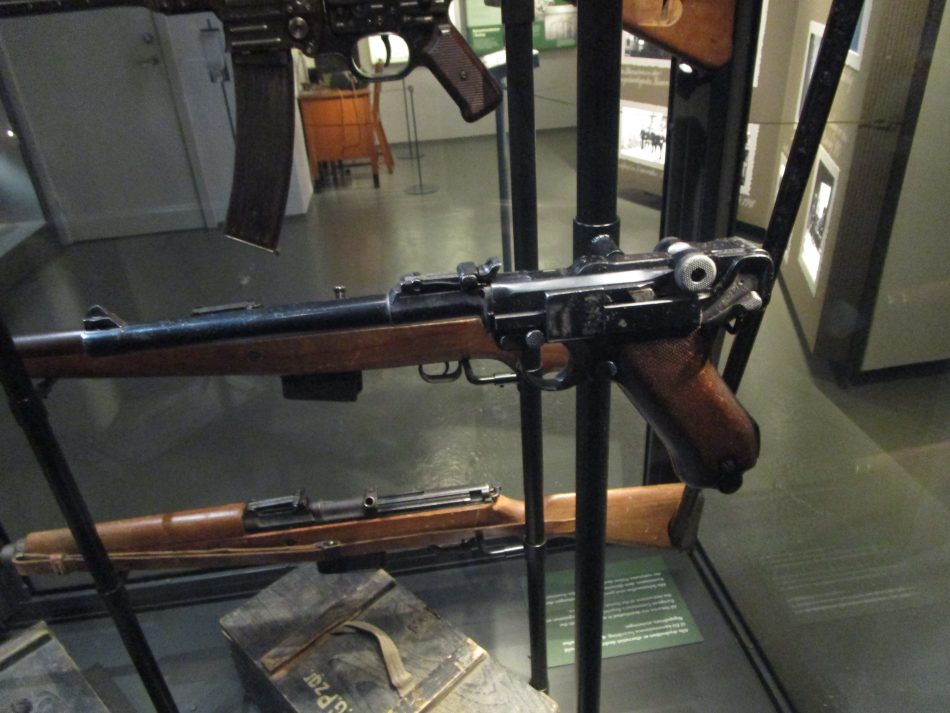
Here are some photos of German troops in Aarhus. The first two were a bit disturbing for my wife as she grew up just off camera (about 150 meters) to the right.
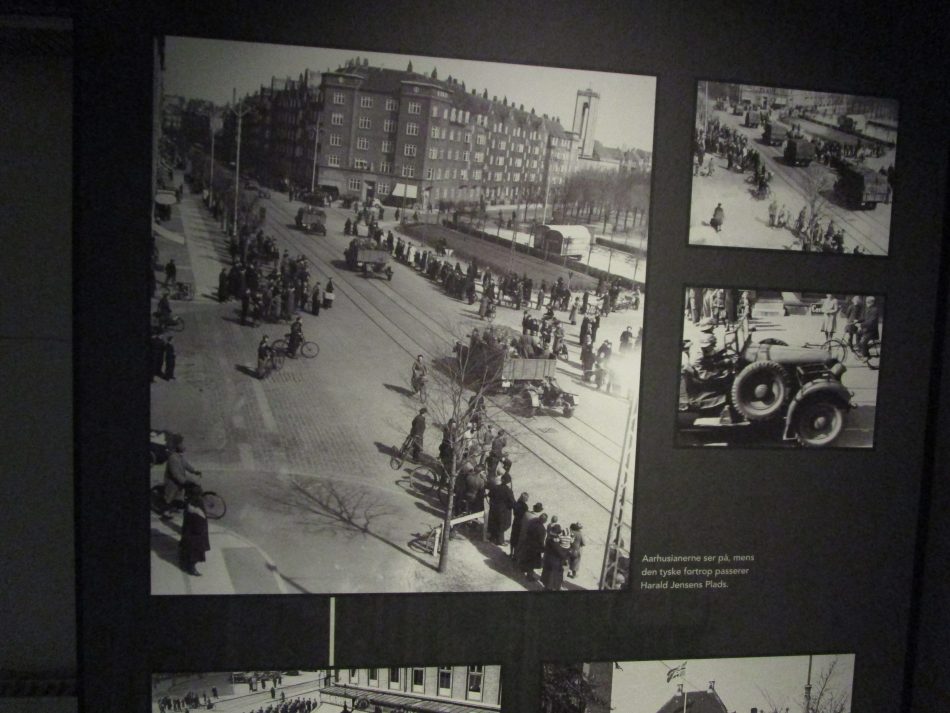
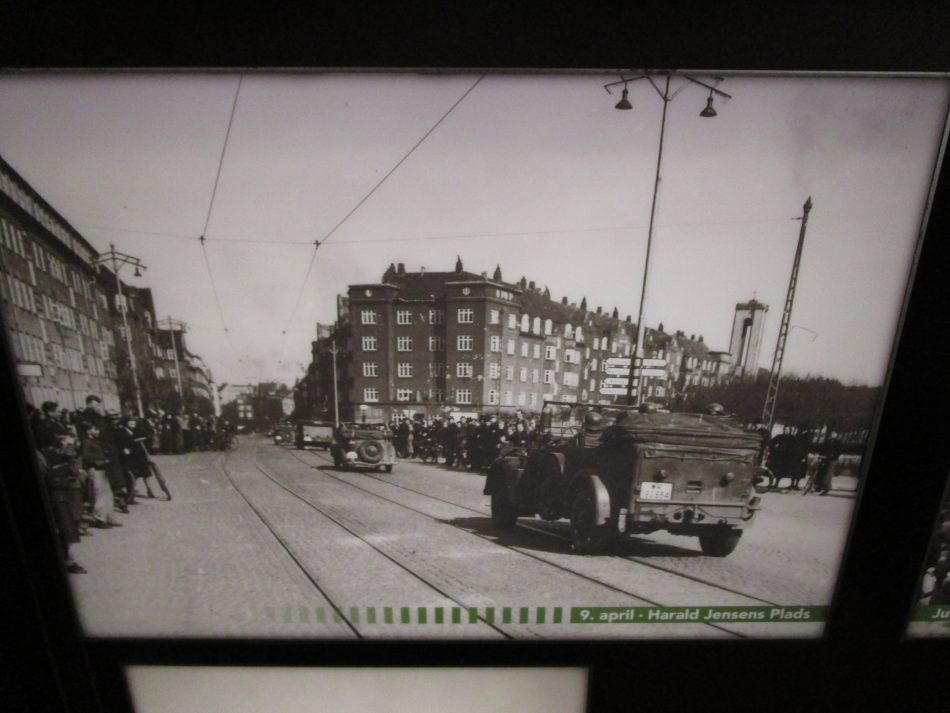
Here is the same shot today. Note that not much has changed.
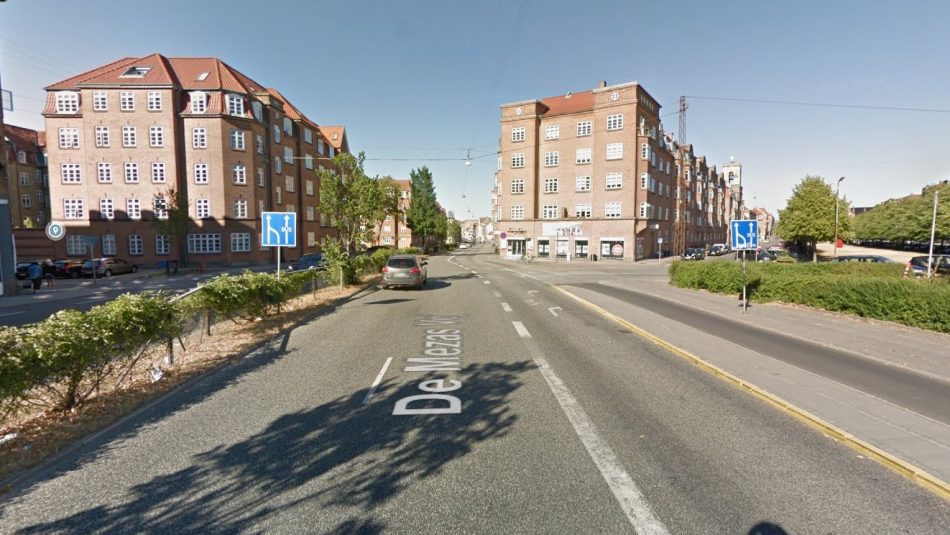
The shot was taken just outside the train station.
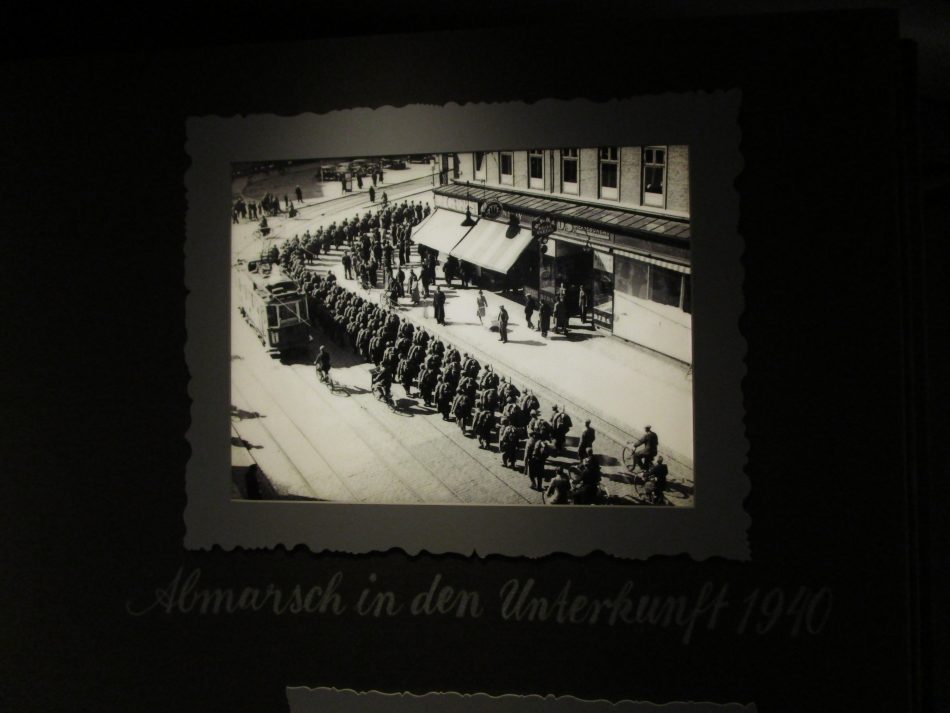
Resistance fighters’ weapons were airdropped by the Allies.
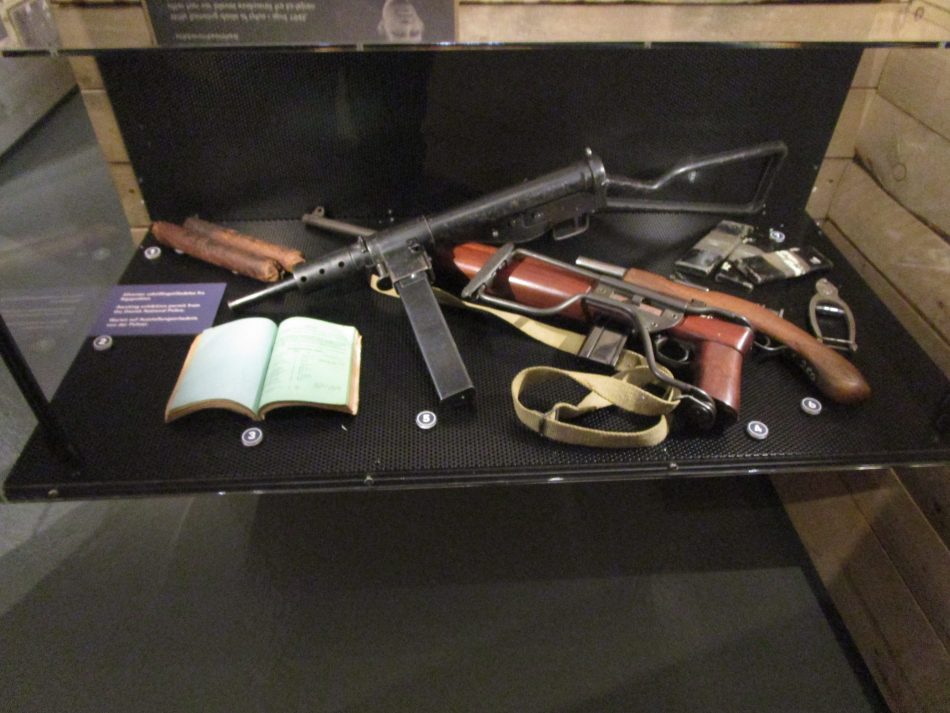
An example of an airdrop canister.
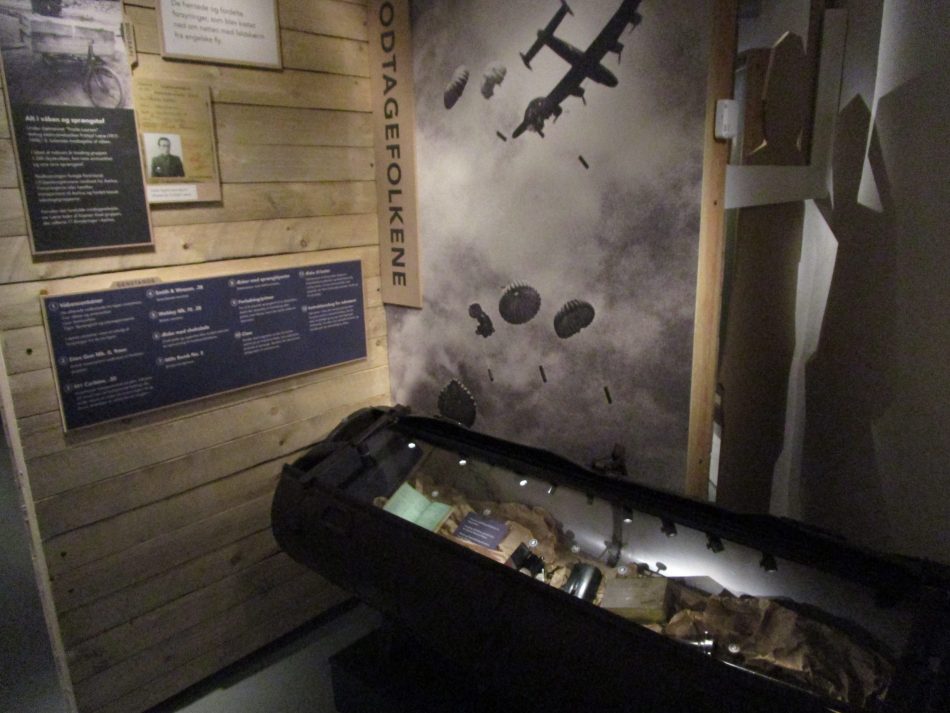
Nice Bren gun and a cardboard bazooka.
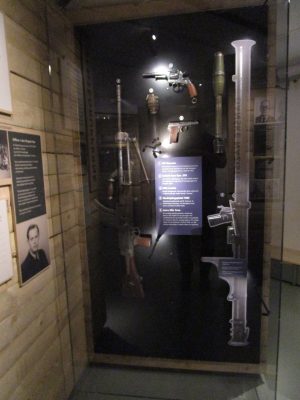
Shots of some of the resistance fighters. There were also some interactive maps of some of the sabotage work that they had done.
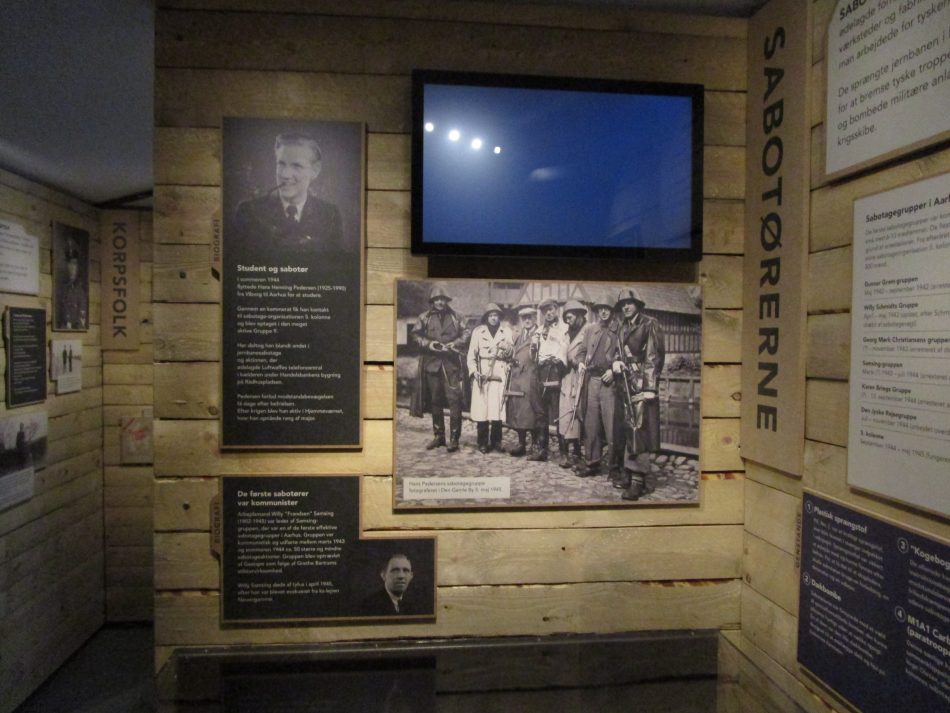
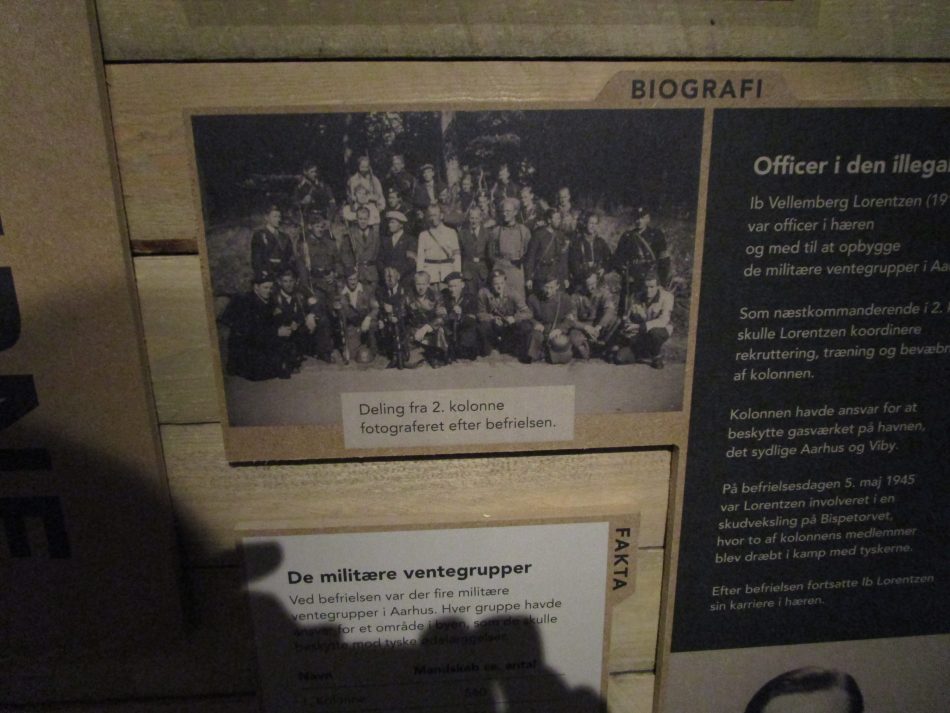
They also had some displays of Danes who were sent to German Concentration Camps. One is located near the present-day German border and is set up as a museum. I am hoping to get there on our next trip.
These photos show the brief firefight at the end of the war. Apparently, some of the Germans didn’t get the message and had to be rooted out of their hiding places. The fight took place within 200 meters of Gestapo Headquarters.
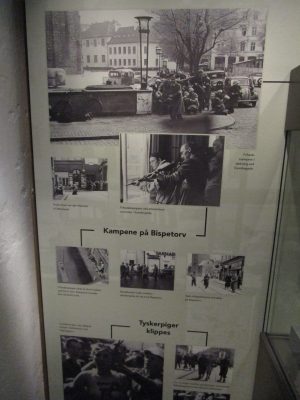
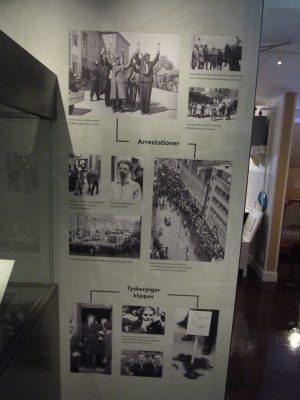
Denmark was liberated on May 5, 1945 (after 1850 days of occupation) by the British who were given a hero’s welcome. In the photo below, we see Monty as part of a victory parade in Denmark a week after liberation.
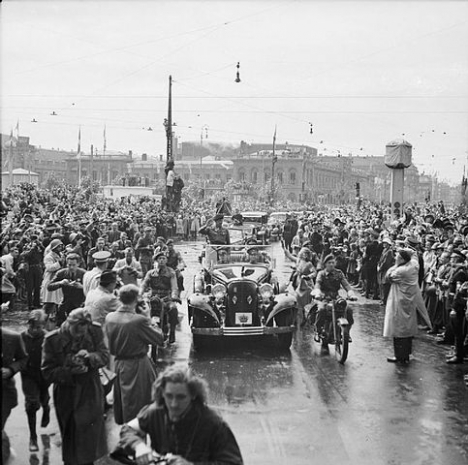
I spent just over an hour at the museum and enjoyed it very much. I had been to the museum a couple of years ago before the big renovation and in many ways, I preferred the older version. It was very rustic and definitely had that old Gestapo HQ look and feel. They also had a lot more weapons and artifacts and didn’t go into too much detail on everyday life in Aarhus. I guess they felt they had to change with the times and the new interactive museum is definitely more appealing to the younger crowd who wouldn’t necessarily be all that interested in military history. The museum was more crowded than before, so I guess they succeeded in their goal.
The museum has a number of very good books on the occupation and resistance in English for sale on site. You can also buy some “ersatz coffee” and this newspaper. It’s a compilation of stories from the first day of the war until the end. A bargain at $4. They were so nice at the museum they offered it to me for free if I didn’t have change, which I did. The first page shows the King’s message to the country.
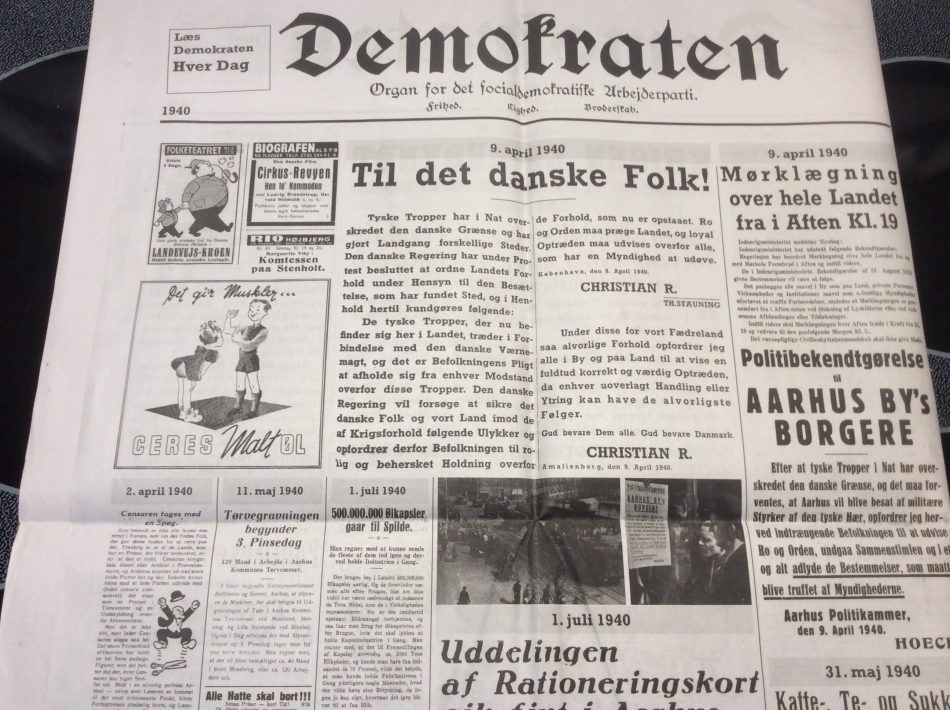
The last page talks about the Germans capitulating, Hitler being, and a nice photo of Monty. There is also a story about 2000 Russians landing on the Danish island of Bornholm.
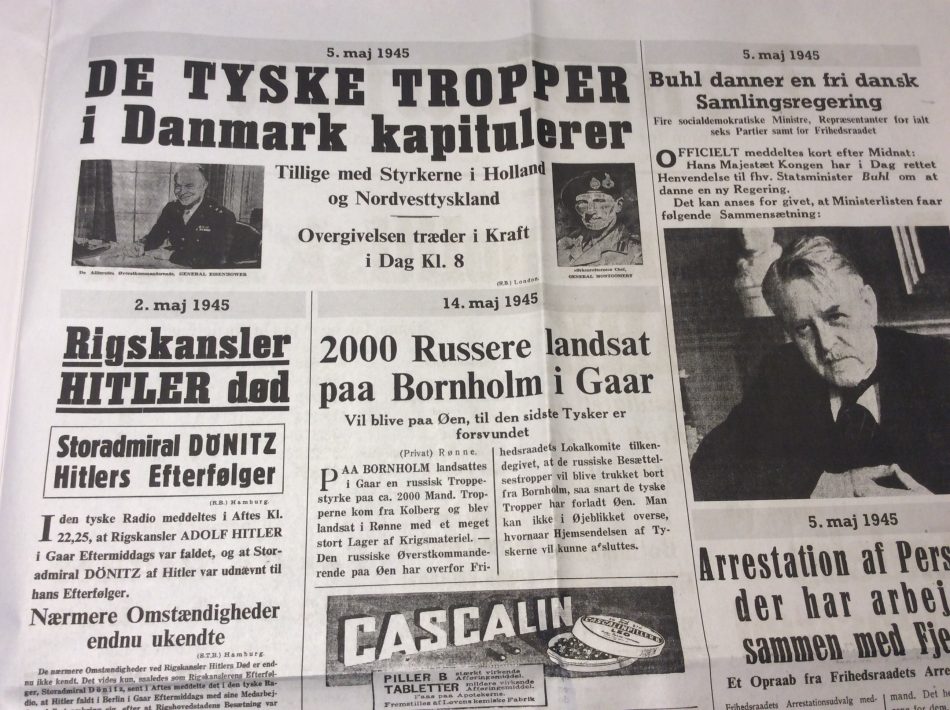
If you are interested in the Danish Resistance movement, there are two movies to watch. The first one is Hvidstengruppen, which is a group that operates just north of Aarhus. The second movie, Flammen & Citronen is more known and depicts actions in Copenhagen.
I realize that most people have never heard of Aarhus. It’s the second-largest city and Denmark and is quite compact and walkable. It’s only a few hours from Copenhagen by train, so if you are in Denmark, i recommend seeing this amazing small city.
Next up will be a report on the new Freedom Museum in Copenhagen.

Great stuff.
Wow, so informative and so interesting! Great job Rob